| ← back |
Colonial Meetinghouses Featured in this Project |
next → |
 Name of Meetinghouse: Fremont Meeting House
Name of Meetinghouse: Fremont Meeting House
View on a mapStreet Address of Meetinghouse: 464 Main St., Fremont, NHYear(s) Built: 1800 National Register of Historic Places Designation: May 27, 1993 New Hampshire State Register of Historic Places: ? Organization responsible: Town of Fremont, New Hampshire Organization's address: 295 Main St., Fremont, NH 03044 Organization's web site: pending Town Information: Town of Fremont, New Hampshire Tax status: Municipal Government - tax exempt Contact: Matthew E. Thomas, 225 South Road, Fremont, NH 03044 Telephone: (603) 895-4032 E-mail: Spiritof1776mt@msn.com Acknowledgements: The following text has been taken from the document History of the Fremont NH 1800 Meeting House, by Matthew E. Thomas, Fremont Town Historian, and has been used by permission.
This unique twin-porch meetinghouse was raised on May 28, 1800, and became a National Historic Landmark on May 27, 1993.
It is only one of two surviving twin-porch meetinghouses still standing in the United States.
The other is located at Rockingham, Vermont.
These twin porches located at each end of the building contained the stairs leading to the second floor gallery.
Fremont's meetinghouse was originally a Georgian-style structure that was nearly remodeled into a Greek-style structure in 1841.
It was at this time the sounding board over the beautiful high pulpit was taken down.
This meetinghouse contains several square box pews upstairs and down, and these pews were deeded property owned individually by various local families. "Slip pews," also known as "bench pews," faced one another across the auditorium in the upstairs gallery. Men would sit on one side, and women on the other. Directly opposite the high pulpit in the gallery is one of the finest examples of early meetinghouse "singing seats" remaining in New England. Also known as the "choir stall," it contains two long benches that face the pulpit and are separated by a slant-topped pine stand for psalm books or sheet music. 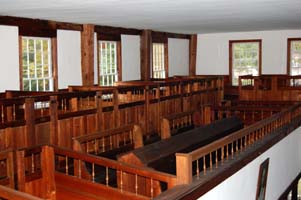
The Fremont meetinghouse contains one of the largest, if not the largest, broad ceilings of any 18th century steeple-less meetinghouse north of Boston. It is the only meetinghouse in Rockingham County, New Hampshire, to have a Queen Post Truss roof system. A single flue brick chimney, built about 1840, rises through the roof just behind the center of the ridge. This chimney is supported by the roof framing but does not extend down into the auditorium below. There is a Slave Pew located in the northeast corner of the second floor gallery that was mostly used by indentured servants. Also, located outside only a few feet east of the Fremont meetinghouse, there is an 1849 Hearse House that still houses a circa 1861 horse-drawn hearse. Ironically, the hearse was last used in 1961, making national headlines. Sandown also has a Hearse House - turned privy - behind its meetinghouse, both being a rare combination in New Hampshire. 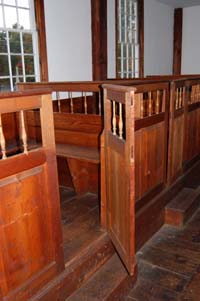
The Fremont meetinghouse underwent a restoration project between 1991 and 1993 when the building was repainted, re-plastered, missing box pew seats replaced, the Deacon's Box restored to its original appearance, the Singing Pews restored, railings and spindles restored, and the high pulpit window restored to its original location. Fremont is unique in that it was the only town in Rockingham County to have never settled a minister of the "standing order" - Congregationalist - at taxpayer expense prior to the passage of the Toleration Act by the State of New Hampshire in 1819, which established the separation of Church and State in New Hampshire. It also took an unprecedented 36 years after the town was incorporated in 1764 to build its first meetinghouse. The Town of Fremont, with support from the Fremont Historical Society, vigilantly maintains this unique New England meetinghouse to keep it structurally sound and in good repair. |
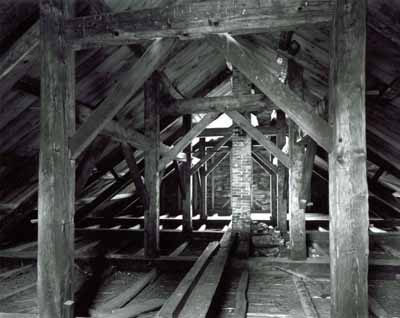
|
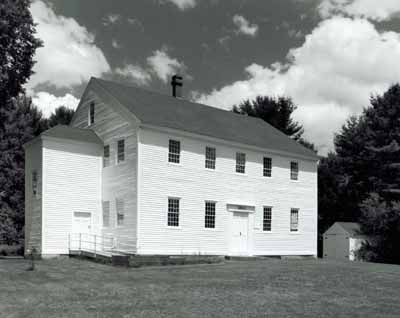
|

|
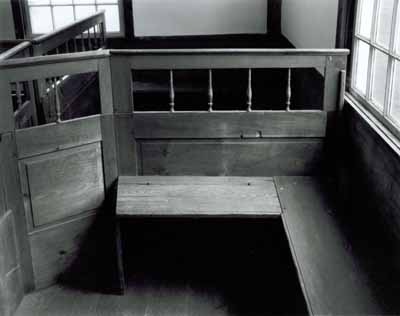
|

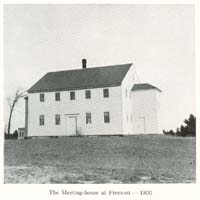 The historic Fremont twin-porch meetinghouse was built in 1800 by the town of Poplin, which was incorporated on June 22, 1764
The name of the town was changed from Poplin to Fremont on July 8, 1854, and named in honor of John Charles Fremont.
He was the great American West explorer and pathfinder, who in 1856 became the first presidential candidate of the newly formed Republican party that was founded at nearby Exeter, New Hampshire on October 12, 1853.
The historic Fremont twin-porch meetinghouse was built in 1800 by the town of Poplin, which was incorporated on June 22, 1764
The name of the town was changed from Poplin to Fremont on July 8, 1854, and named in honor of John Charles Fremont.
He was the great American West explorer and pathfinder, who in 1856 became the first presidential candidate of the newly formed Republican party that was founded at nearby Exeter, New Hampshire on October 12, 1853.
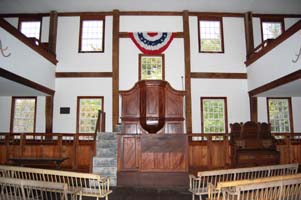 Prior to 1853, during various annual Militia Muster Days, licensed tavern keepers used these side twin porches to sell spirituous liquors to the large assemblage of on-lookers that always attended these popular military training events.
This is the only known meetinghouse in New Hampshire, and perhaps New England, that allowed liquors to be sold from the side porches of a "Town House" (a structure used for both civic and secular purposes).
Town Meetings were held here between 1801 and 1911 when Fremont built a new and unique tin-sided town hall in Fremont's Black Rocks Village.
Prior to 1853, during various annual Militia Muster Days, licensed tavern keepers used these side twin porches to sell spirituous liquors to the large assemblage of on-lookers that always attended these popular military training events.
This is the only known meetinghouse in New Hampshire, and perhaps New England, that allowed liquors to be sold from the side porches of a "Town House" (a structure used for both civic and secular purposes).
Town Meetings were held here between 1801 and 1911 when Fremont built a new and unique tin-sided town hall in Fremont's Black Rocks Village.
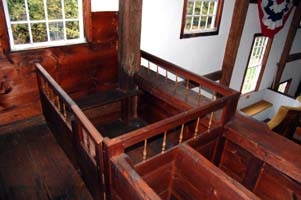 In 1888, the pulpit window was taken out and a plastered wall put in its place.
In 1992, the pulpit window was restored in its original spot behind the high pulpit.
Also in 1888, the box pews located in the middle of the first floor auditorium were taken out and replaced with long wooden benches.
In 1888, the pulpit window was taken out and a plastered wall put in its place.
In 1992, the pulpit window was restored in its original spot behind the high pulpit.
Also in 1888, the box pews located in the middle of the first floor auditorium were taken out and replaced with long wooden benches.